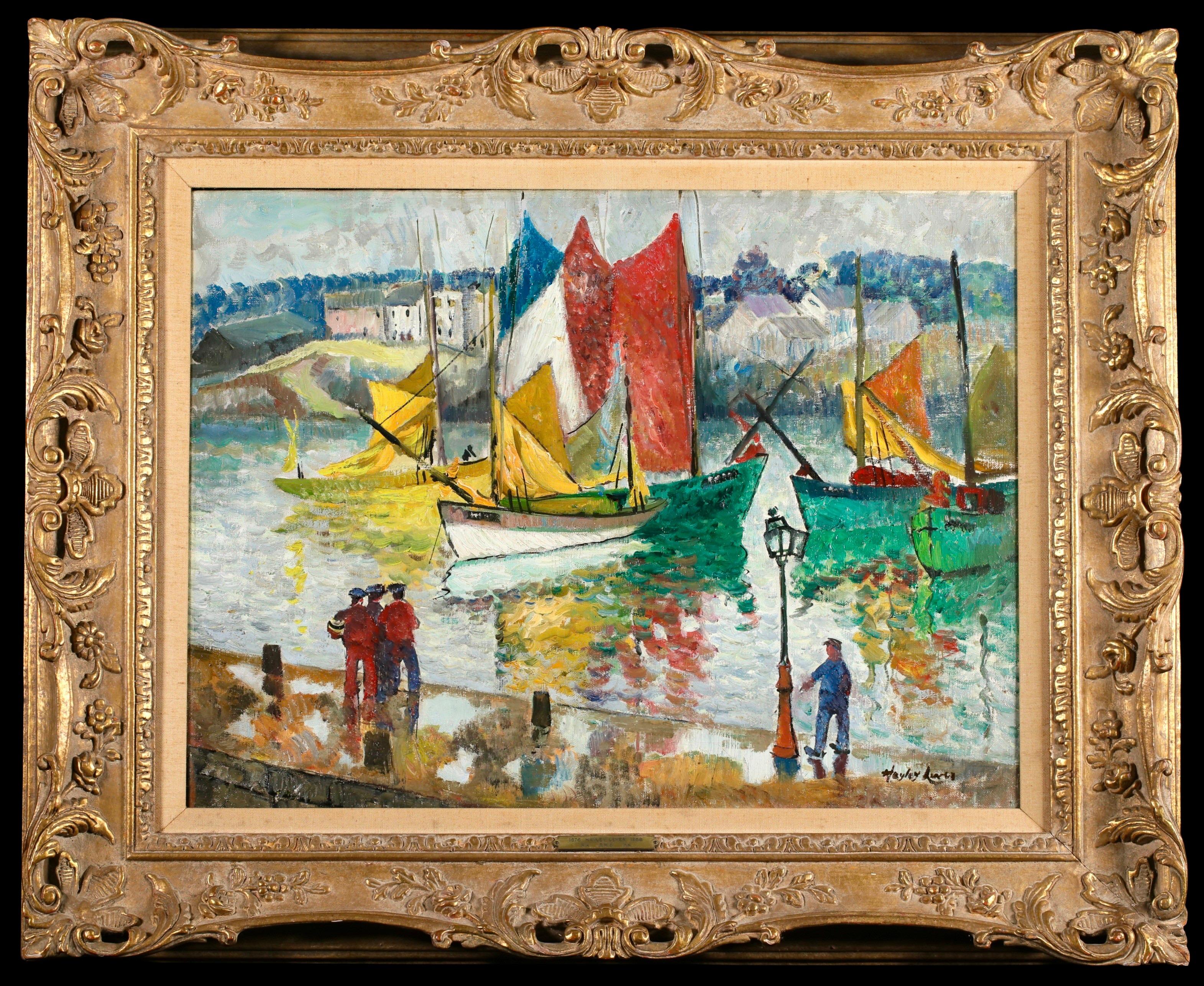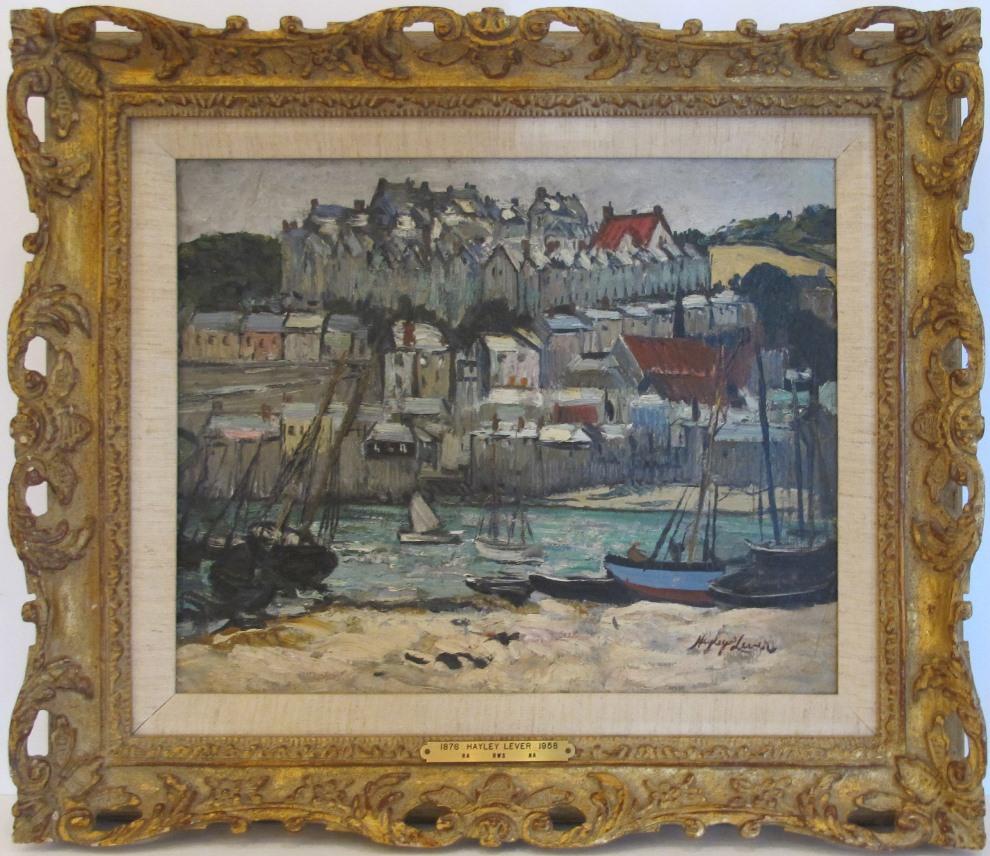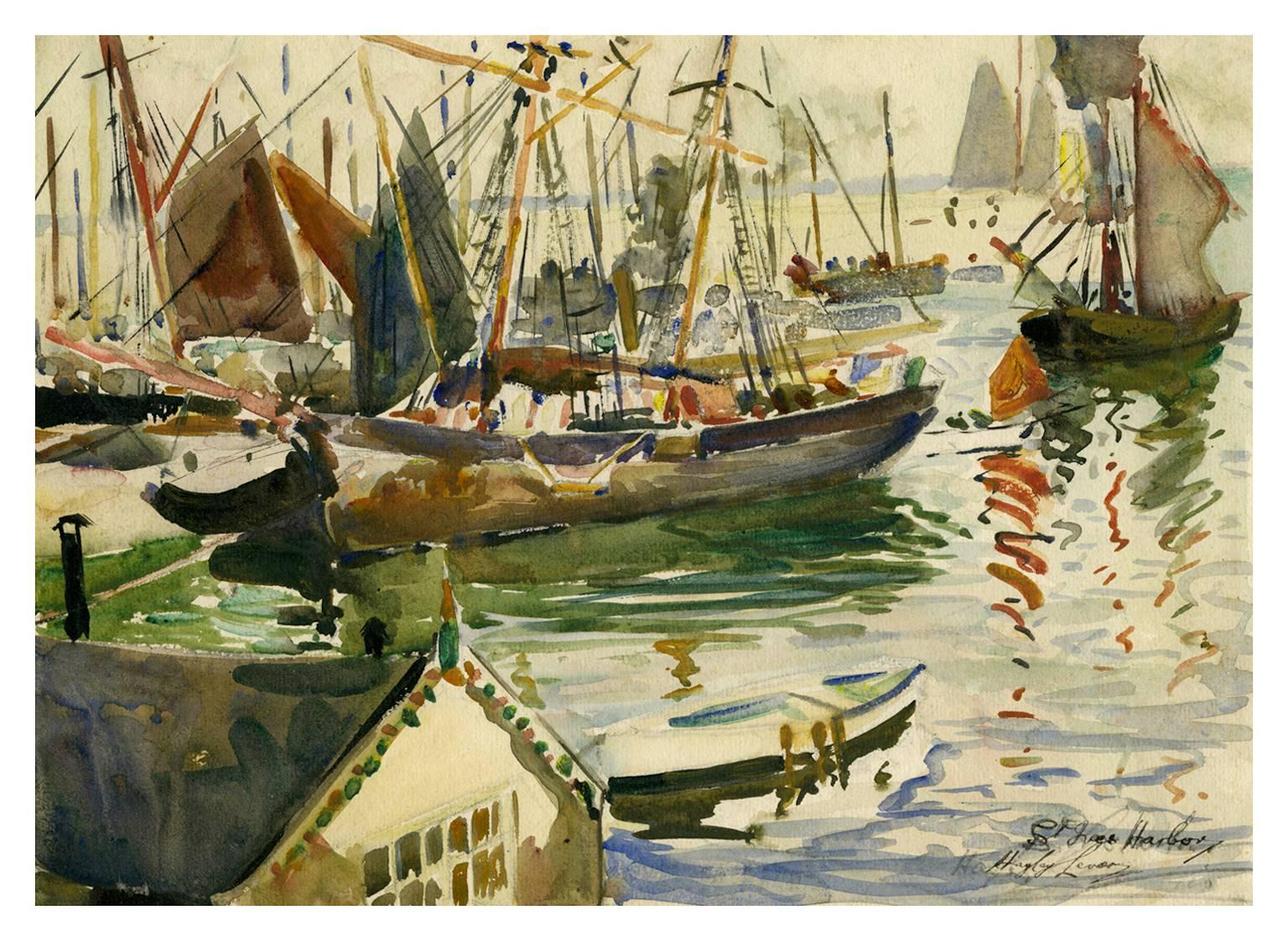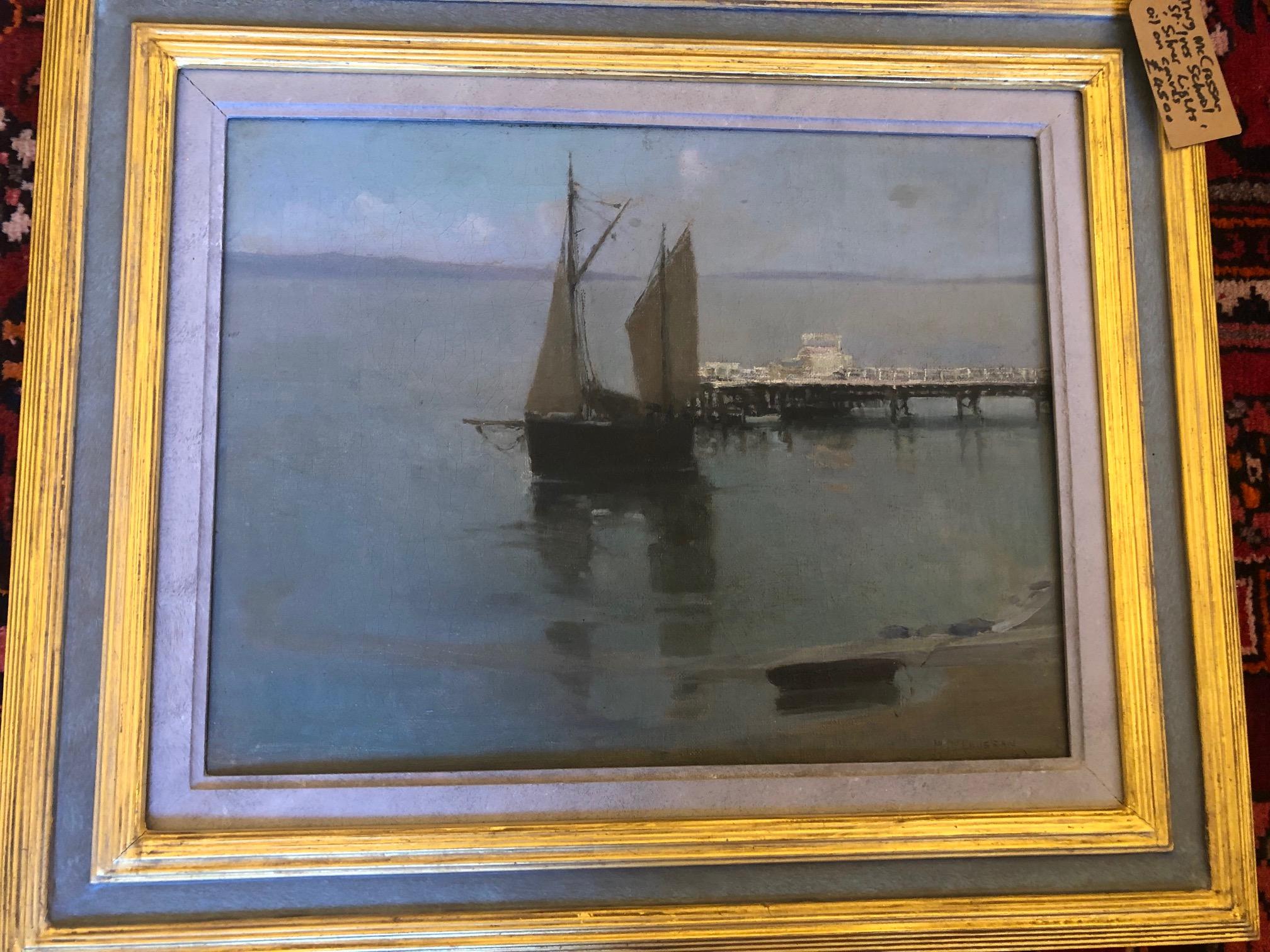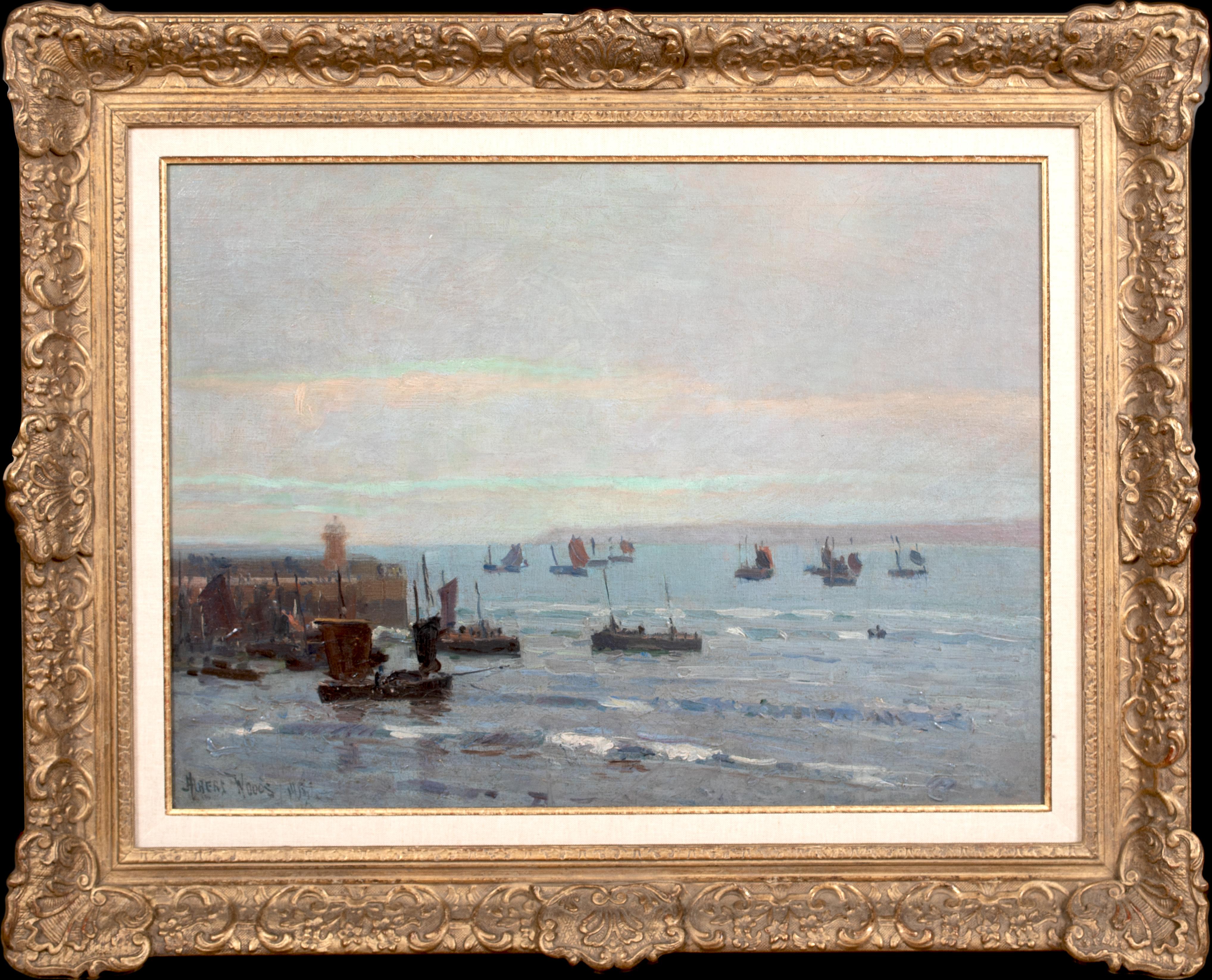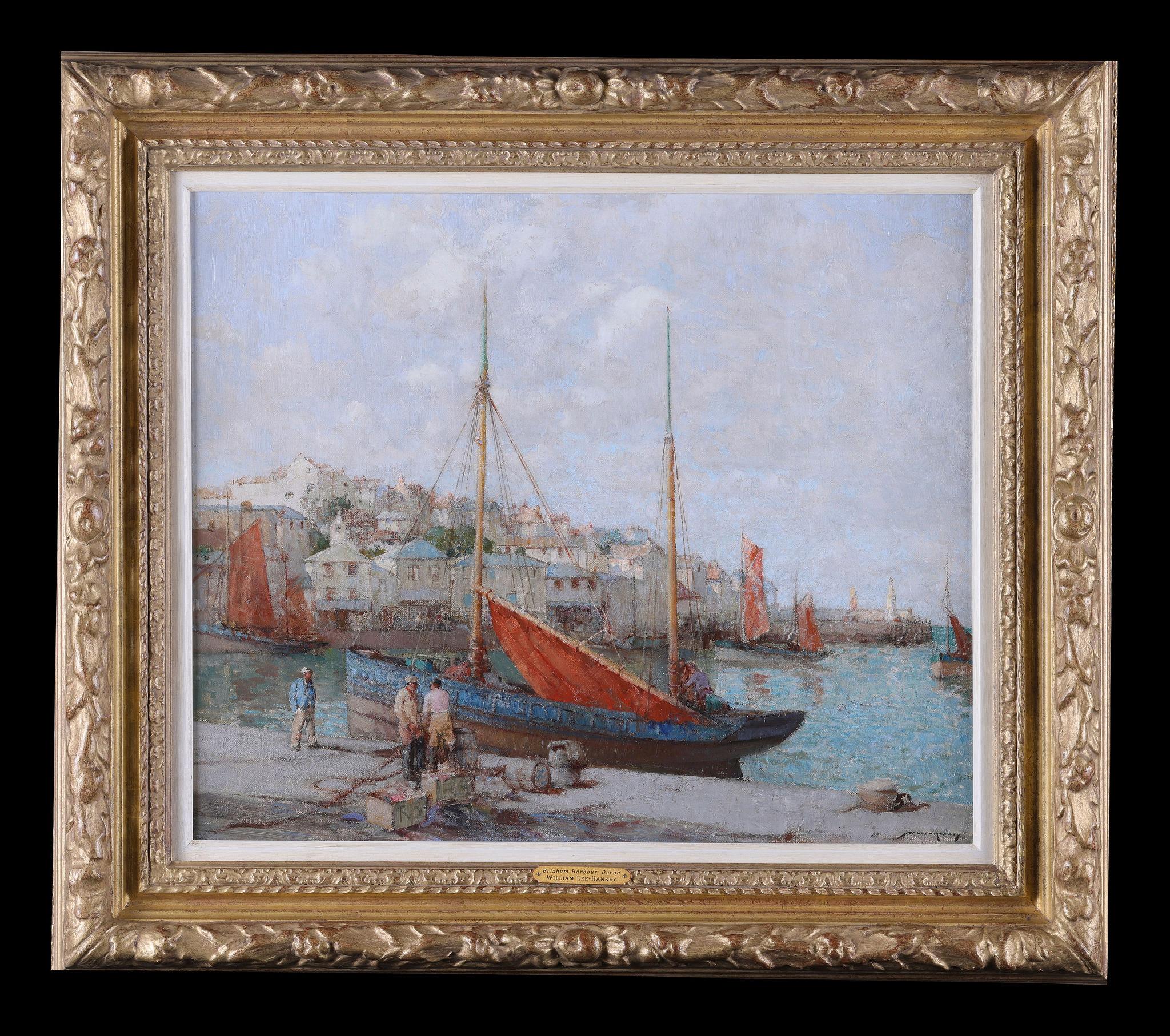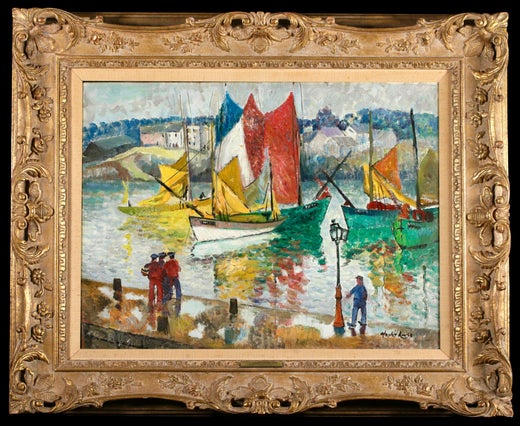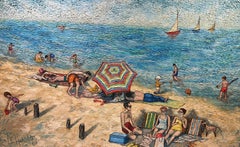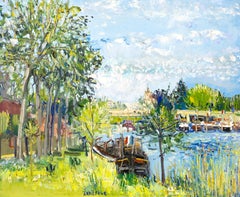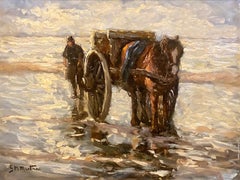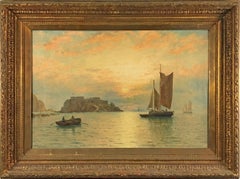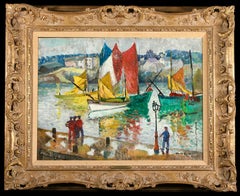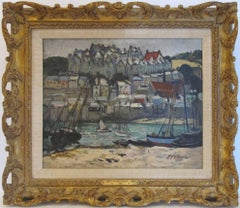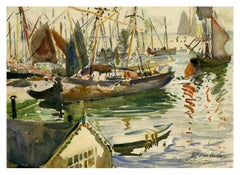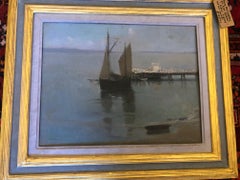Items Similar to Fishing Pier - St. Ives, Cornwall
Want more images or videos?
Request additional images or videos from the seller
1 of 8
Richard Hayley LeverFishing Pier - St. Ives, Cornwall
Price Upon Request
Price Upon Request
Price Upon Request
Price Upon Request
Price Upon Request
Price Upon Request
Price Upon Request
Price Upon Request
Price Upon Request
Price Upon Request
Shipping
Retrieving quote...The 1stDibs Promise:
Authenticity Guarantee,
Money-Back Guarantee,
24-Hour Cancellation
About the Item
Richard Hayley Lever (1876 - 1958)
"Fishing Pier - St. Ives, Cornwall
Oil on Canvas
Canvas: approx 6 1/3 x 9 1/3 inches
Framed Size: approx. 11 x 14 inches
Born in Adelaide, Australia, Hayley Lever was known for his town-shore landscapes and still-life painting in a style that combined impressionism with vivid colors and strong lines of realism---post impressionism. In his use of color, he was deeply influenced by Vincent Van Gogh. He freely explored numerous styles based on impressionism but was never locked into any particular style.
He showed early art talent and traveled to England in 1893. He studied art in London and then painted at an artists' colony in Cornwall on the seacoast of St. Ives where he began his seacoast paintings. He received much attention in Europe for these works. In 1908, he did a series of paintings called "Van Gogh's Hospital, Holland" expressing the profound influence he felt of that artist.
Lever came to America in 1911, encouraged by American artist Ernest Lawson whom he knew in France, and was soon counted among the most widely exhibited artists in New York City. Many of his scenes were of Manhattan. He had a summer studio in Gloucester, Massachusetts and from 1919 to 1931 taught at the Art Students League in New York City. He also became Director of the Studio Art Club in Mount Vernon, New York.
Lever imparted to his students the following message: "Art is the re-creation of mood in line, form and color. If I were confined to my own back yard for the rest of my life, I'd still have more pictures in my mind than I would have time to paint. Art is nothing but having a good time" (Comenos Fine Art).
He died in Mount Vernon, New York in 1958, having suffered ill health the last few years of his life.
He received many awards and critical acclaim and his works were purchased by major American museums, such as New York's Metropolitan Museum of Art and Washington's Phillips Collection and Corcoran Museum.
Source:
Michael David Zellman, "Three Hundred Years of American Art"
- Creator:Richard Hayley Lever (1876-1958, American)
- Dimensions:Height: 11 in (27.94 cm)Width: 14 in (35.56 cm)Depth: 1 in (2.54 cm)
- Medium:
- Movement & Style:
- Period:
- Condition:
- Gallery Location:Missouri, MO
- Reference Number:1stDibs: LU74734986931
Richard Hayley Lever
An Australian by birth, Richard Hayley Lever left his native Adelaide at the age of 17 to train as an artist in Europe, and his work soon won attention in London and Paris. In 1900 he was introduced to the St Ives Club by fellow Australian Louis Grier, and he married Aida Gale in the town in the same year. Working closely with Grier and with Julius Olsson he maintained St Ives as a base, while also painting marine subjects along the southern coast of England and in Brittany. In 1912 Hayley Lever move to New York and took American citizenship. His paintings of the Hudson Valley, Vermont, and Nantucket secured an international reputation.
About the Seller
5.0
Vetted Professional Seller
Every seller passes strict standards for authenticity and reliability
Established in 1970
1stDibs seller since 2017
155 sales on 1stDibs
Typical response time: 1 to 2 days
- ShippingRetrieving quote...Shipping from: Missouri, MO
- Return Policy
Authenticity Guarantee
In the unlikely event there’s an issue with an item’s authenticity, contact us within 1 year for a full refund. DetailsMoney-Back Guarantee
If your item is not as described, is damaged in transit, or does not arrive, contact us within 7 days for a full refund. Details24-Hour Cancellation
You have a 24-hour grace period in which to reconsider your purchase, with no questions asked.Vetted Professional Sellers
Our world-class sellers must adhere to strict standards for service and quality, maintaining the integrity of our listings.Price-Match Guarantee
If you find that a seller listed the same item for a lower price elsewhere, we’ll match it.Trusted Global Delivery
Our best-in-class carrier network provides specialized shipping options worldwide, including custom delivery.More From This Seller
View AllBeach at Playa Del Rey California
Located in Missouri, MO
Beach at Playa Del Rey California by Louis Carl Hvasta (1913-1993)
Signed and Dated Lower Left
Unframed: 21" x 34"
Framed: 28.25" x 41"
Frame was Hand made by ...
Category
20th Century American Impressionist Landscape Paintings
Materials
Oil, Panel
Price Upon Request
Bateau Sous la Pont
By Yolande Ardissone
Located in Missouri, MO
Bateau Sous la Pont
Yolande Ardissone (French, b. 1927)
Oil on Canvas
Signed Lower Center
30.25 x 25.25
31.5 x 36.5 inches with frame
Born in Normandy on June 6, 1927 to an Italian ...
Category
Late 20th Century Impressionist Landscape Paintings
Materials
Canvas, Oil
Price Upon Request
Where are the Clams?
By Gerhard Morgenstjerne Munthe
Located in Missouri, MO
Searching for Clams with the Horse Cart
By. Gerhard Munthe (German, 1875-1927)
Signed Lower Left
Unframed: 11" x 14"
Framed: 19" x 23"
Born in Dusseldo...
Category
Early 20th Century Impressionist Animal Paintings
Materials
Oil, Panel
Price Upon Request
Sunset on the Midway
By George Stanfield Walters
Located in Missouri, MO
George Stanfield Walters (1838-1924)
"Sunset on the Midway" c. 1880s
Oil on Canvas
Signed
Canvas: approx 25 x 36 inches
Framed Size: approx. 31 x 42 inches
George Walters - George Stanfield Walters was born in 1838 and died in 1924.
A marine and coastal painter. He was grandson to ship portraitist Miles Walters,
and son and pupil of Samuel Walters...
Category
Mid-19th Century Victorian Landscape Paintings
Materials
Canvas, Oil
Price Upon Request
Children at the Seashore
By Josef Israels
Located in Missouri, MO
Children at the Seashore
By Josef Israels (1824-1911)
Unframed: 9" x 15"
Framed: 17.5" x 23.5"
Signed Lower Left
Born in Groningen, Holland, in 1824, Josef Israels was brought up in the traditions of the Jewish faith and destined for the rabbinate. His interest in drawing grew stronger with age however, and in 1840 his father finally relented, sending him to Amsterdam. There he spent his days working in the studio of Jan Kruseman and his evenings painting at the Royal Academy under Jan Pieneman, both leading portrait painters. In Paris, Israels studied a short time with the historical painter Francois Picot...
Category
19th Century Realist Landscape Paintings
Materials
Oil, Panel
Price Upon Request
Gray Brothers
By Charles Harold Davis
Located in Missouri, MO
Charles Harold Davis (1856-1933)
"Gray Brothers"
Oil on Canvas
Signed Lower Left
Canvas Size: 30 x 24 inches
Framed Size: 35 x 30.5 inches
Born in Amesbury, Massachusetts, Charles ...
Category
Late 19th Century American Impressionist Landscape Paintings
Materials
Canvas, Oil
Price Upon Request
You May Also Like
Harbour at St Ives - Impressionist Figures Seascape Oil by Richard Hayley Lever
By Richard Hayley Lever
Located in Marlow, Buckinghamshire
Signed figures in landscape oil on board by Australian-American impressionist painter Richard Hayley Lever. The work depicts brightly coloured sailing boats in the harbour of St Ives...
Category
Early 1900s Impressionist Figurative Paintings
Materials
Oil, Canvas
"St Ives From the Quay Cornwall England"
By Hayley Lever
Located in Lambertville, NJ
Jim's of Lambertville is proud to offer this artwork by Hayley Lever (1875 – 1958)
Born in Adelaide, Australia in 1875, Richard Hayley Lever was best known for his paintings that sy...
Category
Early 1900s Impressionist Landscape Paintings
Materials
Canvas, Oil
St. Ives Harbor, Cornwall, England — British Post-Impressionism
By Hayley Lever
Located in Myrtle Beach, SC
An early 20th-century Hayley Lever watercolor depicting fishing boats docked at the St. Ives Harbor, Cornwall, England. A fine, spontaneous rendering on watercolor paper, with fresh ...
Category
Early 1900s Impressionist Landscape Drawings and Watercolors
Materials
Watercolor
$2,240 Sale Price
20% Off
St Ives School Twentieth Century view of Pier at St Ives Cornwall, Oil Painting
Located in ludlow, GB
St Ives School Twentieth Century view of Pier at St Ives Cornwall, Oil Painting with Sailing Boat and Silvery Seas.
Fantastic Post Impressionist Oil Painting of her native town whic...
Category
20th Century Impressionist Landscape Paintings
Materials
Oil
The Fishing Fleet, St Ives, dated 1918 by ALBERT WOODS ( 1871-1944)
Located in Blackwater, GB
The Fishing Fleet, St Ives, dated 1918
by ALBERT WOODS ( 1871-1944)
Large 1918 view of the fishing fleet at St Ives, oil on canvas by Albert Woods. Excellent quality and condition ...
Category
Early 20th Century Landscape Paintings
Materials
Canvas, Oil
$2,137 Sale Price
35% Off
'Brixham Harbour, Devon' an antique oil painting
By William Lee Hankey
Located in St. Albans, GB
William LEE HANKEY RWS, ROI
An oil painting is in very good condition. The canvas has had a clean and a varnish. There is no noticeable restoration.
British 1869 - 1952
William Lee Hankey was born in Chester and after leaving school he worked as a designer while attending evening art classes at the Chester School of Art under Walter Schroeder. Lee-Hankey later studied at the Royal College of Art before becoming a renowned painter and print-maker.
From the early 1890s Lee Hankey exhibited at numerous and notable art galleries, which included the Leicester and Lefevre Galleries, the Royal Academy, the Royal Institute of Painters in Watercolours, the Royal Institute of Oil Painters as well as the Royal Society of Painter-Etchers and Engravers/Painter-Printmakers. In 1886 he became a member of the Royal Society of British Artists, in 1909 an associate member of the Royal Society of Painter-Etchers and Engravers and a full member in 1911 in 1896 he became a member of the Royal Institute and was President of the London Sketch...
Category
Early 20th Century Impressionist Paintings
Materials
Oil
More Ways To Browse
Richard Hollander
Antique Yard Art
Antique St Michael
Antique Fishing Line
Piers Phillips
Pacific Coast Lighting
Steven Arnold
1800 American Oil Paintings
19th Century Landscape Moonlight
Dandelion Paintings
David C Levy
E G Webster
Francis Winter
Maggy Clarysse
Mary Butler
Old Masters Cattle Paintings
Robert S Merrill
Sheep Herder Painting
